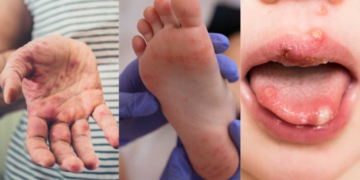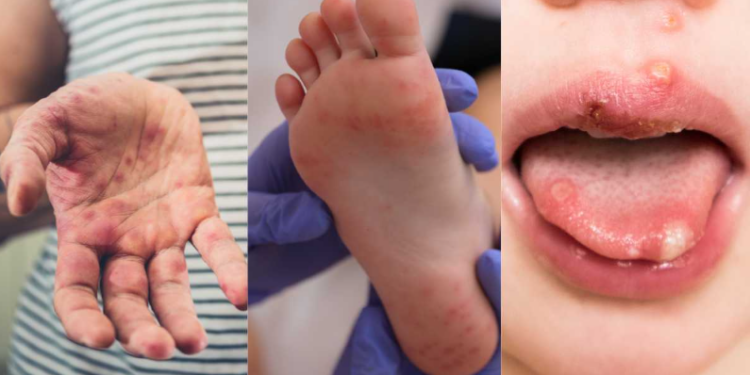By Ebi Kesiena
South Africa’s KwaZulu-Natal province is experiencing a significant surge in hand, foot, and mouth disease (HFMD) cases, sparking concerns among health authorities.
The number of confirmed cases of hand, foot, and mouth disease (HFMD) in KwaZulu-Natal has risen significantly, increasing from 117 to 168 as of Monday. The highly contagious viral infection continues to spread, particularly among young children in schools and daycare centers.
According to the provincial health department, eThekwini District remains the most affected, reporting 120 cases. King Cetshwayo District has recorded 25 cases, while uGu and uMkhanyakude Districts have reported 20 and 3 cases, respectively.
Department spokesperson Ntokozo Maphisa stated that outbreak teams have been actively investigating the affected schools since the initial six cases were detected between February 6 and 10.
“All reported cases stem from primary schools and daycare centers. Children affected by HFMD have exhibited flu-like symptoms, including fever, sore throat, and loss of appetite, as well as blisters and swollen hands,” said Maphisa.
The disease primarily affects children under 10 years old. While less common in adults, individuals with weakened immune systems may also be at risk.
Meanwhile, the health department urged parents, caregivers, and school staff to prioritize hygiene to curb the spread of HFMD.
Despite the rising cases, Maphisa emphasized the importance of staying informed and avoiding panic.
“We acknowledge the growing number of cases, but we appeal for calm. Understanding HFMD its symptoms, transmission, and prevention is key to managing the outbreak,” he said.
Unlike foot-and-mouth disease, which affects animals, HFMD only occurs in humans. Symptoms usually appear within three to seven days of exposure and last for about a week.
“There is no specific vaccine or treatment for HFMD, but symptoms such as fever and pain can be managed with medication. The infection is typically self-limiting, resolving on its own within seven to ten days,” Maphisa explained.
A small percentage of cases may require hospitalization for complications, but most individuals recover with proper care, rest, and hydration.




































